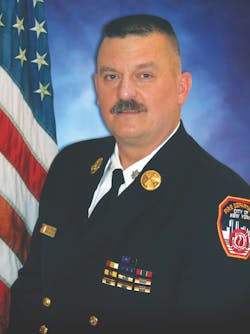Like many of you, I have been in and around the fire service for many years, and there are some conditions and situations that just keep prompting me to ask, “Why?” Some of these have existed for quite some time, and some are more modern matters.
Equipment smarts
When I was the captain of Engine 48 in the Bronx, we had a very old brass valve inserted between the stream shaper and the pipe. The valve was there when I arrived as the new captain of the company, and it was there years later when I was promoted to battalion chief. The reason that it was there was that the manufacturers of deck pipes and multiversals didn’t provide one of these appliances. Maybe there was a reason for that or maybe not, but the valve certainly was a useful addition to that master stream device.
- John J. Salka Jr. will present “Five Alarm Leadership” at Firehouse Expo. To register, visit firehouseexpo.com.
The most helpful use of the valve was that it permitted the pipe to be charged when the valve was closed, and the water wouldn’t flow until a member climbed up and slowly opened it. This also prevented the stream from immediately discharging and, because it was kept facing forward, from knocking the warning lights off of the top of the apparatus cab. This simple addition was used many times at large and small fires in the Bronx.
Accountability variances
The second condition that perplexes me is the use of different—and I mean dramatically different—accountability systems by departments that run in with each other and provide mutual aid assistance for working fires. How can this not be noticed by the command staff of the involved departments? Why isn’t this reported to headquarters by the field chief officers who use these systems at their own working fires?
There are a number of different types and styles of accountability systems, and more modern and more effective ones are created every day. However, the basic concept of sharing technology and systems for something as important as accountability must be examined.
SCBA timing
Another interesting, confusing and, I believe, unnecessary activity is the process of timing the donning of the full PPE ensemble. Yes, of course, speed is important for any process that we engage in while responding to alarms, and, yes, again, quickly getting into bunker pants and coat before boarding the apparatus is vital. However, the same doesn’t apply to the SCBA in most cases.
After more than 40 years in the fire service, I have noticed that just about every firefighter dons SCBA from a sitting position inside of the cab of the apparatus. FDNY firefighters I worked with set their turnout gear in a ready position on the apparatus and get dressed very quickly when responding. However, the SCBA is waiting in the cab, and they get into the straps and buckles while the rig responds. Even the firefighters whose departments carry the SCBA in compartments that are outside of the crew cab already are wearing their bunker gear when they reach in to don the SCBA while standing beside the apparatus.
‘Division’ vs. ‘floor’
The most confusing of my “why” questions involves the use of the word “division” when talking about the level of the building that members are on. I know it’s an element of the incident command system, and God forbid we don’t comply with that, but here is my concern: A firefighter arrives at a new firehouse assignment and is ushered in by the on-duty crew. After talking for several minutes, the members of the crew tell the new arrival to head up to see the officer on the second floor. The young recruit goes up and talks with the officer, who then suggests that the new firefighter meet the other crew members on the third floor to get a new locker. The next day, the company conducts building inspections; the officer assigns two members to inspect a store on the first floor and the officer and the new recruit look at the second floor. As they head back to the firehouse, they receive an alarm for a medical call on the second floor of the library down the street. After all of this, they respond to a working fire and are ordered to operate on division 3. Unbelievable!
About the Author
John J. Salka Jr.
Battalion Chief
JOHN J. SALKA JR., who is a Firehouse contributing editor, retired as a battalion chief with FDNY, serving as commander of the 18th battalion in the Bronx. Salka has instructed at several FDNY training programs, including the department’s Probationary Firefighters School, Captains Management Program and Battalion Chiefs Command Course. He conducts training programs at national and local conferences and has been recognized for his firefighter survival course, “Get Out Alive.” Salka co-authored the FDNY Engine Company Operations manual and wrote the book "First In, Last Out–Leadership Lessons From the New York Fire Department." He also operates Fire Command Training, which is a New York-based fire service training and consulting firm.

